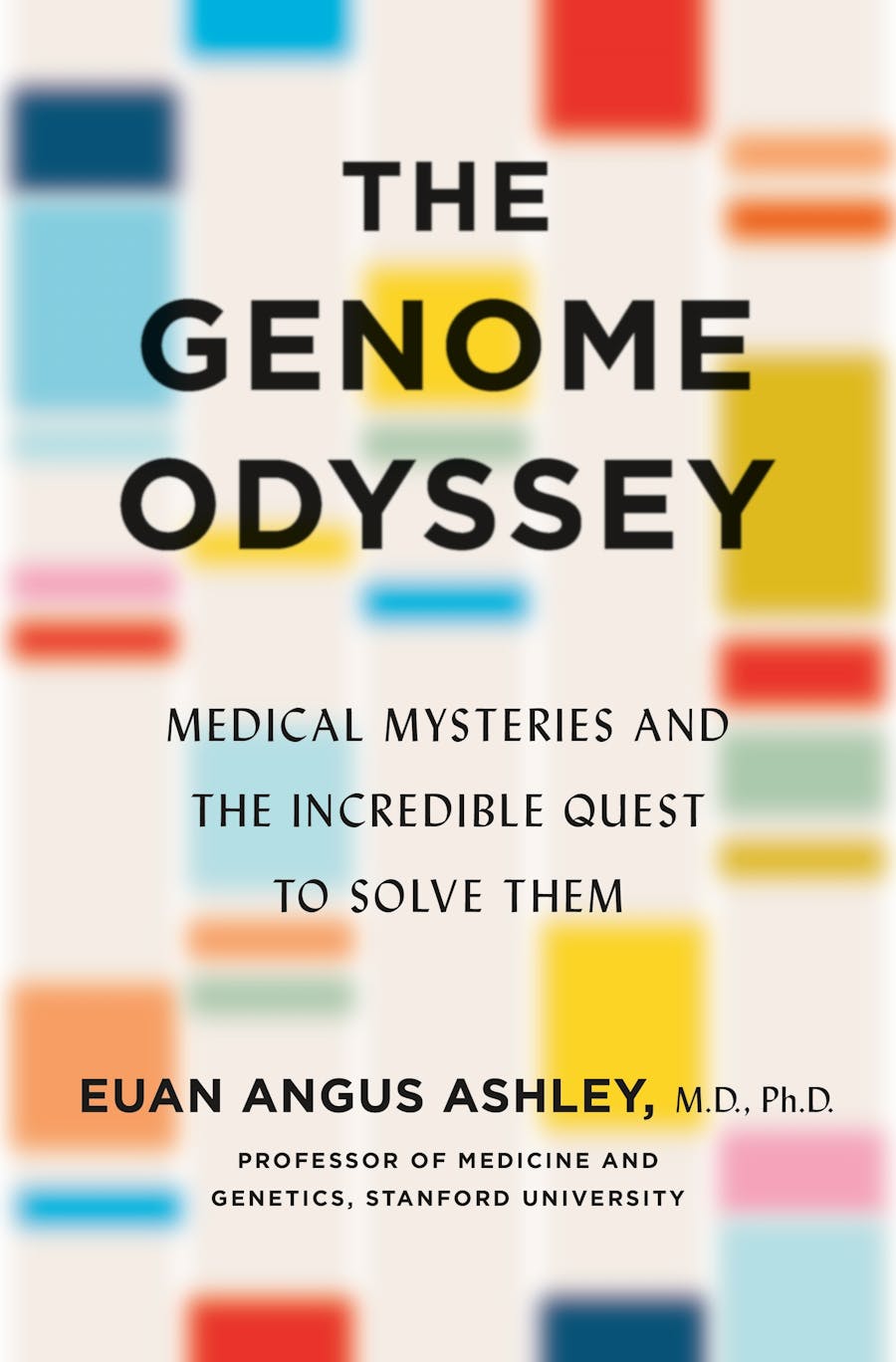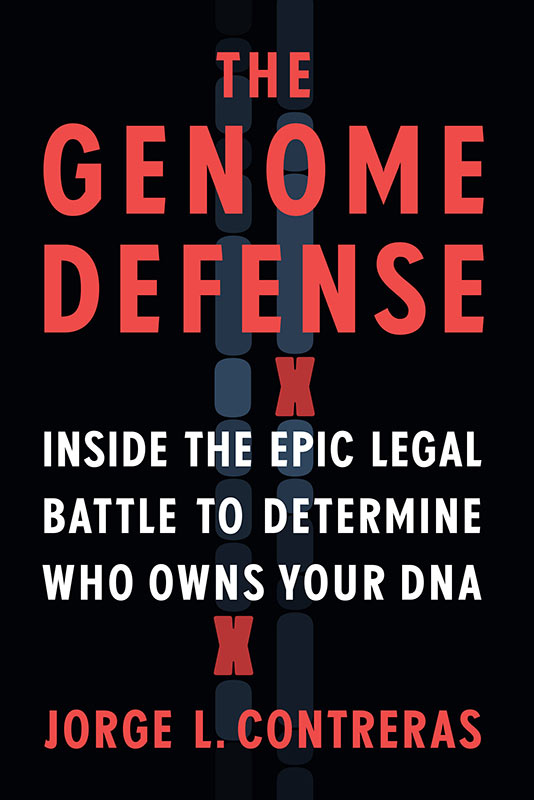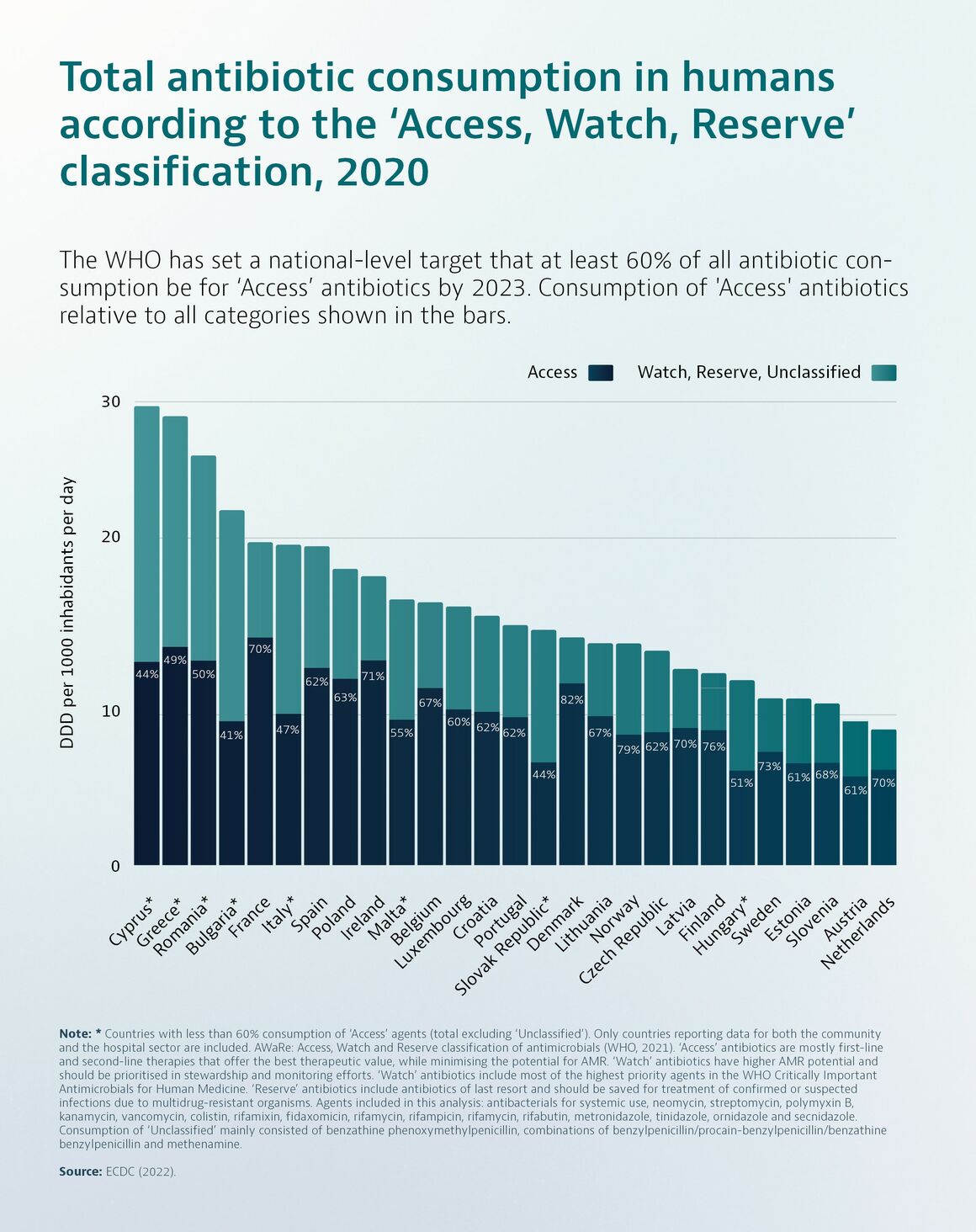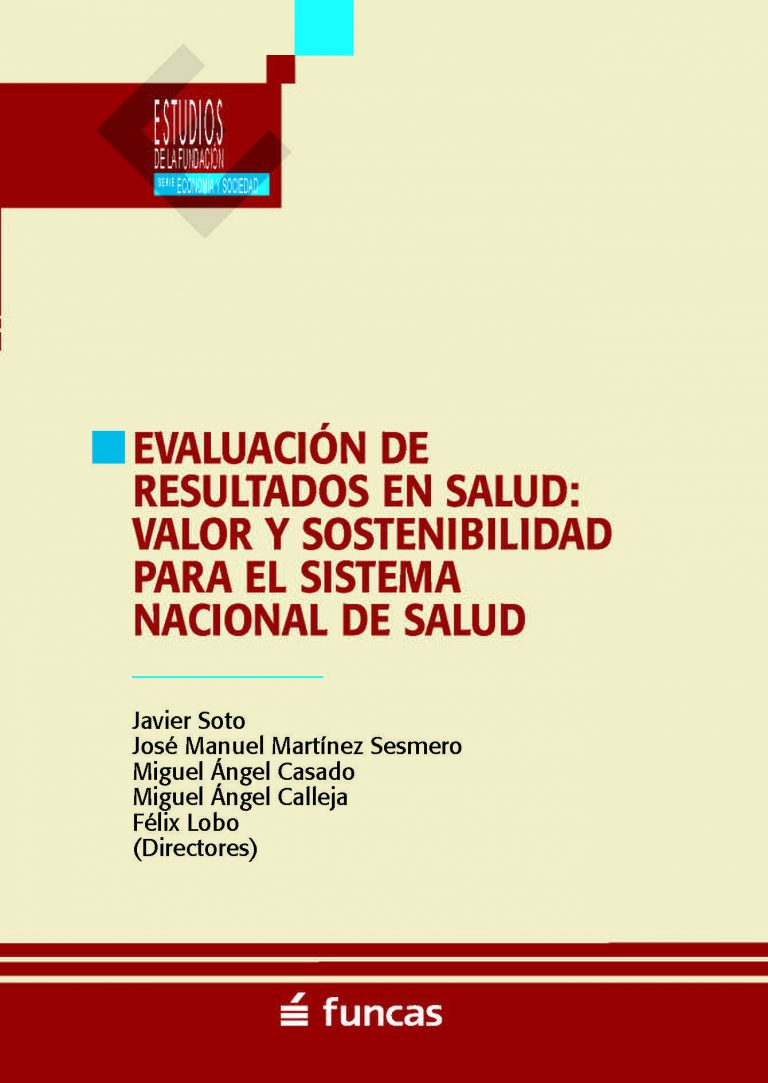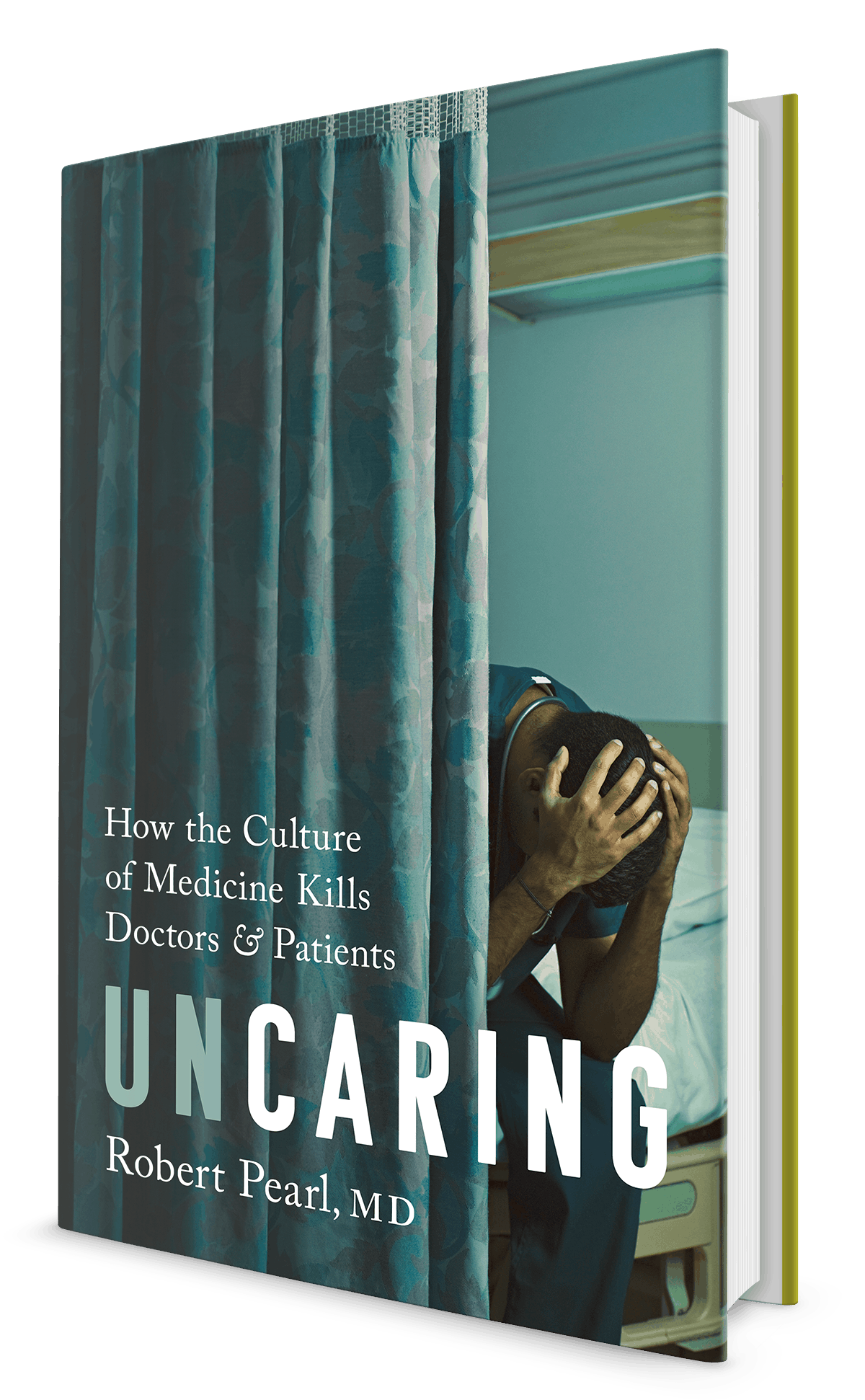The Genome Odyssey. Medical Mysteries and the Incredible Quest to Solve Them
El llibre "The Genome Odyssey: Medical Mysteries and the Incredible Quest to Solve Them" del Dr. Euan Angus Ashley narra els primers anys d'aventures després de la decisió d'explorar el món del genoma humà. A través de les seves pàgines, l'autor porta el lector a un viatge dins la ciència i la medicina del genoma humà, explicant històries de pacients la cura dels quals s'ha transformat pel coneixement del seu genoma. També presenta equips científics que l'autor ha liderat i admirat, i traça un camí des de les dades del genoma fins a l'acció mèdica.
El llibre està dividit en quatre parts principals:
Part I: Els primers genomes
Aquesta secció introdueix l'equip de l'autor i els seus esforços per desxifrar mèdicament alguns dels primers genomes seqüenciats. Comença amb la història d'un col·lega de Stanford que va examinar el seu propi genoma el 2009, un moment revelador que va portar l'equip a intentar aplicar totes les observacions genètiques humanes conegudes al seu genoma per comprendre millor els seus riscos de malaltia. L'autor també parla del fill del seu cosí, que va morir sobtadament a l'adolescència, i de com van utilitzar la seqüenciació genètica del seu teixit cardíac postmortem per intentar trobar respostes per a la seva família. Es descriu l'origen de la seqüència de referència humana a Buffalo, Nova York, i la història d'una estudiant de secundària que va portar les seqüències del genoma de tota la seva família a l'escola per a un projecte de ciències. L'autor explica com van estendre aquests esforços a les seves clíniques de Stanford i com van iniciar una empresa per ampliar l'impacte més enllà d'aquests murs. El primer capítol, "Patient Zero", presenta el cas de Parker, un nadó amb problemes d'alimentació, son i desenvolupament, la recerca del qual va iniciar un llarg viatge de proves sense diagnòstic clar. També es narra la trobada de l'autor amb Steve, un científic que estava analitzant el seu propi genoma, i el descobriment d'una variant en un gen relacionat amb la cardiomiopatia hipertròfica. Es destaca la importància de la història familiar com a eina diagnòstica. L'autor explica els components bàsics del genoma (ADN, bases ATGC, cromosomes) i la seva complexitat. També introdueix el concepte de gens i la part no codificant del genoma ("ADN escombraria") i la seva funció reguladora. Es descriuen les noves tecnologies de seqüenciació de genomes que permeten generar una gran quantitat de dades de manera ràpida i el procés bioinformàtic per organitzar aquestes dades comparant-les amb la seqüència de referència humana. L'equip va crear una base de dades de variants genètiques comunes i la va curar manualment per fer-la útil per a l'anàlisi. Es presenta PharmGKB, una base de dades de farmacogenòmica que relaciona variants genètiques amb la resposta als medicaments. La publicació del primer article de l'equip a The Lancet va ser un moment clau, i van abordar les qüestions ètiques i de consentiment relacionades amb la seqüenciació del genoma complet. Finalment, es discuteix l'ús de la seqüenciació del genoma en autòpsies moleculars per intentar comprendre les causes de la mort sobtada.
Part II: Detectius de malalties
En aquesta part, l'autor compara la medicina genòmica amb el treball de detectiu, on la lectura del genoma és la nova eina per resoldre "crims" diagnòstics. Es narren històries de pacients amb malalties no diagnosticades que han passat anys buscant respostes i les troben gràcies a la genòmica. Es descriu una xarxa nacional de detectius de malalties amb la missió d'acabar sistemàticament amb aquestes "odissees" diagnòstiques. Un cas destacat és el de Matt Might i el seu fill Bertrand, que va ser diagnosticat amb la deficiència de NGLY1, una malaltia rara descoberta gràcies a la col·laboració i la divulgació en línia. Es relata com la família Might va utilitzar un blog viral i la col·laboració amb altres científics per identificar altres casos i començar a buscar possibles tractaments. L'autor també parla de la creació de la Undiagnosed Diseases Network (UDN) i els seus èxits en el diagnòstic de malalties rares, que sovint condueixen a canvis importants en la cura dels pacients. S'explica el concepte de mosaicisme, on un individu té cèl·lules amb diferents composicions genètiques, i com això pot manifestar-se en malalties com la neurofibromatosi i en el cor d'una pacient anomenada Astrea.
Part III: Afers del cor
Aquesta secció se centra en els pacients cardíacs de l'autor. Es parla d'una aspirant a estrella de Broadway amb una cardiomiopatia dilatada i la perspectiva d'un trasplantament de cor. També es descriu com van intentar trencar rècords de velocitat de seqüenciació del genoma per diagnosticar i tractar una nounada el cor de la qual es va aturar cinc vegades el primer dia de la seva jove vida. Es relata la història d'un jove amb múltiples tumors creixent dins del seu cor i com van traçar la causa a una peça que faltava del seu genoma. També es parla d'una nena nascuda no amb un sinó amb dos genomes diferents. En aquesta secció, l'autor també introdueix la història de la nostra comprensió de les malalties del cor i la mort sobtada, les condicions que hi predisposen i els personatges destacats el treball dels quals va proporcionar les idees que ara utilitzem per tractar-les. Es descriu el descobriment del complex de Carney per Aidan Carney i la història del desenvolupament dels desfibril·ladors implantables (ICD) per Mordechai Mirowski. La secció inclou la història de Leilani, una pacient amb cardiomiopatia hipertròfica que va rebre un trasplantament de cor i el suport que va trobar en la Hypertrophic Cardiomyopathy Association (HCMA). També es menciona la recerca de Jim Spudich sobre la miosina i la seva rellevància per a la comprensió de la cardiomiopatia hipertròfica.
Part IV: Medicina de precisió acurada
En aquesta part final, l'autor mira cap al futur de la medicina. Discuteix com l'examen de superhumans (humans protegits de malalties pels seus genomes) pot ajudar a fer que la resta siguem una mica més "super". Descriu diversos dels nous i emocionants esforços per obtenir coneixements de la seqüenciació de milions d'humans, inclosa la Precision Medicine Initiative del president Obama i el Biobanc del Regne Unit. Es parla dels avenços en la curació i el tractament de malalties genètiques, inclosa la teràpia genètica, així com dels mètodes per desenvolupar fàrmacs tradicionals que es veuen impulsats per coneixements genòmics. Es narra la història d'Eric Dishman, la lluita contra el càncer i la seva defensa de la medicina de precisió. Es destaca la importància de les grans bases de dades genòmiques poblacionals, com gnomAD, per a la interpretació de variants genètiques i la comprensió de les malalties. L'autor conclou amb la història de Mila Makovec, una nena amb la malaltia de Batten per a la qual es va desenvolupar un tractament personalitzat basat en la comprensió del seu genoma.
